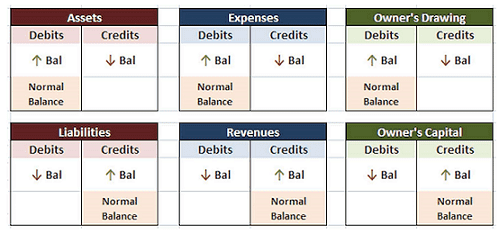Content

For mid-size private firms, they might be prepared internally and then looked over by an external accountant. Long-term investments are securities that will not or cannot be liquidated in the next year. Cash and cash equivalents https://www.bookstime.com/ are the most liquid assets and can include Treasury bills and short-term certificates of deposit, as well as hard currency. The balance sheet provides an overview of the state of a company’s finances at a moment in time.

Once used primarily by larger companies, small business owners can also benefit from running a classified balance sheet. Traditional balance sheets only list down the assets, liabilities, and equity without any classification or breakdowns. The classified balance sheet is more dynamic and detailed in this regard. Also see formula of gross margin ratio method with financial analysis, balance sheet and income statement analysis tutorials for free download on Accounting4Management.com.
Classified Balance SheetDefined with Examples
Accounts payable is debt obligations on invoices processed as part of the operation of a business that are often due within 30 days of receipt. Current portion of long-term debt is the portion of a long-term debt due within the next 12 months. For example, if a company has a 10 years left on a loan to pay for its warehouse, 1 year is a current liability and 9 years is a long-term liability.
This calculation often helps shareholders determine how much money they may receive if the company enters bankruptcy and liquidates its assets. The balance sheet includes information about a company’s assets and liabilities. Depending on the company, this might include short-term assets, such as cash and accounts receivable, or long-term assets such as property, plant, and equipment (PP&E). Likewise, its liabilities may include short-term obligations such as accounts payable and wages payable, or long-term liabilities such as bank loans and other debt obligations. For example, all current assets, such as cash and accounts receivable, show up in one grouping.
Equity is the owners’ residual interest in the assets of a company, net of its liabilities. The amount of equity is increased by income earned during the year, or by the issuance of new equity. The amount of equity is decreased by losses, by dividend payments, or by share repurchases. A company can use its balance sheet to craft internal decisions, though the information presented is usually not as helpful as an income statement. A company may look at its balance sheet to measure risk, make sure it has enough cash on hand, and evaluate how it wants to raise more capital . Managers can opt to use financial ratios to measure the liquidity, profitability, solvency, and cadence of a company using financial ratios, and some financial ratios need numbers taken from the balance sheet. When analyzed over time or comparatively against competing companies, managers can better understand ways to improve the financial health of a company.
Business Development
Operating Cycle Of The BusinessThe operating cycle of a company, also known as the cash cycle, is an activity ratio that measures the average time required to convert the company’s inventories into cash. Once the information has been entered into the correct categories, you’ll add each category or classification individually. When that is complete, you’ll need to add all the subtotals to arrive at your asset total, which is $236,600.
For example, you’ll want to compare your liabilities and decide whether they fit into long-term or short-term liabilities. The shareholder equity section mainly provides information about how the firm has been financed and how much profit it retains to reinvest further in the business. The same principle holds for the Liabilities section, where you’ll list all current liabilities, as well as those that are long term, such as mortgages and other loans.
What Is a Classified Balance Sheet, and Do You Need One for Your Business?
Looking at a single balance sheet by itself may make it difficult to extract whether a company is performing well. For example, imagine a company reports $1,000,000 of cash on hand at the end of the month.
Make sure your accounting system can track all of these accounts and compile data in real-time. Additional Paid-in CapitalAdditional paid-in capital or capital surplus is the company’s excess amount received over and above the par value of shares from the investors during an IPO. It is the profit a company gets when it issues the stock for the first time in the open market. It is determined by subtracting the fair value of the company’s net identifiable assets from the total purchase price.
What Is a Classified Balance Sheet?
In deciding whether the acid-test ratio is satisfactory, investors consider the quality of the marketable securities and receivables. An accumulation of poor-quality marketable securities or receivables, or both, could cause an acid-test ratio to appear deceptively favorable. When referring to marketable securities, poor quality means securities likely to generate losses when sold. Poor-quality receivables may be uncollectible or not collectible until long past due. The ASSET section of the classified balance sheet was explained in the previous unit. We will now look at the liability section and some analysis tools we have available with the classified balance sheet. Investopedia requires writers to use primary sources to support their work.
- Further, accounting standards may prescribe minimum reporting line items.
- When a firm publishes a classified balance sheet, it presents the valuation of its assets and how these current valuations have been calculated.
- Instead, management can choose the accounts and classifications that will be most useful to its end users.
- An unclassified sheet is simpler to produce, but may warrant additional questions from investors or outside parties about the character of your net worth or liquidity position.
- Categorizing the balance sheet into current and long-term categories allows those to be easily accomplished.
- The components of assets, liabilities, and equity are broken down into further sub-headings for provided in-depth information to the users.
Employees usually prefer knowing their jobs are secure and that the company they are working for is in good health. The balance sheet adheres to an equation that equates assets with the sum of liabilities and shareholder equity.
Classified Balance Sheet
The remaining amount is distributed to shareholders in the form of dividends. Deferred tax liability is the amount of taxes that accrued but will not be paid for another year. Besides timing, this figure reconciles differences between requirements for financial reporting and the way tax is assessed, such as depreciation calculations. A liability is any money that a company owes to outside parties, from bills it has to pay to suppliers to interest on bonds issued to creditors to rent, utilities and salaries. Current liabilities are due within one year and are listed in order of their due date. Long-term liabilities, on the other hand, are due at any point after one year.
- Easily ascertain the position of assets to pay for the current liabilities.
- A classified balance sheet is a financial statement that reports the assets, liabilities, and equity of a company.
- This financial statement lists everything a company owns and all of its debt.
- It is determined by subtracting the fair value of the company’s net identifiable assets from the total purchase price.
The assets section will typically contain three common subsections, which are current assets, fixed assets, and other assets. Doing this makes it much simpler to read and interpret than simply listing all of the accounts that make up assets and liabilities along with equity.
Mary Girsch-Bock is the expert on accounting software and payroll software for The Ascent. The offers that appear in this table are from partnerships from which Investopedia receives compensation. Dividends payable is dividends that have been authorized for payment but have not yet been issued. Inventory refers to any goods available for sale, valued at the lower of the cost or market price. The Board will determine effective dates for final ASUs after redeliberating comments received during the comment periods and from the public roundtable meetings. To solicit additional feedback on the Board’s decision process under the Disclosure Framework, the Board plans to hold a public roundtable meeting March 17, 2017.
- These Sources include White Papers, Government Information & Data, Original Reporting and Interviews from Industry Experts.
- Apple’s total liabilities increased, total equity decreased, and the combination of the two reconcile to the company’s total assets.
- This calculation often helps shareholders determine how much money they may receive if the company enters bankruptcy and liquidates its assets.
- A classified balance sheet is a financial statement that separates a company’s assets and liabilities into different categories.
- A classified balance sheet or a Statement of Financial Position, contains information on the financial position of a business.
- The bankers can easily access the liquidity of an organization through analyzing a classified balance sheet.
- Advisory services provided by Carbon Collective Investment LLC (“Carbon Collective»), an SEC-registered investment adviser.
As a matter of fact, it may take 30 years to pay a mortgage loan or 10 years to pay an equipment loan. Cash EquivalentsCash equivalents are highly liquid investments with a maturity period of three months or less that are available with no restrictions to be used for immediate need or use. These are short-term investments that are easy to sell in the public market..
Although the number of categories can vary to meet the reporting needs of a company, there are seven different categories that appear on a typical classified balance sheet. A classified balance sheet arranges the amounts from a company’s balance sheet accounts into a format that is useful for the readers. For instance, the reader can easily calculate the company’s working capital since the classified balance sheet shows the total amount of the company’s current assets and the total amount of its current liabilities. If you work in accounting and are responsible for your company’s balance sheet, classified balance sheets may be a regular part of your job.
Which of the following is not classified as current asset?
D) Property is not classified as a current asset.
This will ensure that your balance sheet is comparable over multiple accounting periods. The equation shall also hold true in the case of a classified balance sheet. This means that when you add all classifications of assets, it shall be equal to the sum of all classifications of equity and liabilities. If you are incorporated, the category will include your capital stock and retained earnings.
For instance, they can use measurements like the current ratio to assess the company’s leverage and solvency by comparing the current assets and liabilities. This type of analysis wouldn’t be possible with atraditional balance sheetthat isn’t classified into current and long-term categories. The investors and creditors can use the classified balance sheet for ratio analysis purposes. Since the assets and liabilities are broken down into current and long-term, therefore ratios like the current ratio can provide a lot of insights into understanding the current financial position of a company. An unclassified balance sheet reports your assets and liabilities, but does not separate the items into classes.

Interest payable is accumulated interest owed, often due as part of a past-due obligation such as late remittance on property taxes. Prepaid expenses represent the value that has already been paid for, such as insurance, advertising contracts, or rent. Marketable securities are equity and debt securities for which there is a liquid market. That’s because a company has to pay for all the things it owns by either borrowing money or taking it from investors .
The components of assets and liabilities are also classified as current and non-current. Larger organizations use a classified balance sheet format as the format provides for detailed information to the users for better decision-making. The financial statements of your business are comprised of several different reports. Your balance sheet is one report included in your financial statement package, and may be presented with classified or unclassified information. The equity section of a classified balance sheet is very simple and similar to a non-classified report. Common stock, additional paid-in capital, treasury stock, and retained earnings are listed for corporations. Partnerships list member capital accounts, contributions, distributions, and earnings for the period.

Comentarios recientes